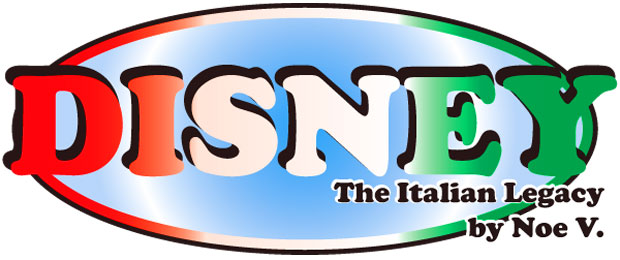
If the subject for the blog was about Disney board games most would automatically assume that I was talking about the licensed board games. Disney’s version of Monopoly, Disney’s version of Clue or even Disney’s version of Candyland might come to mind. Yet Disney used to produce original board games which honored their legacy and were instantly collectable at the same time. Some of the earliest were based on Disneyland attractions and were both fun and highly collectable. This blog will talk about one of the rarer board games from overseas.
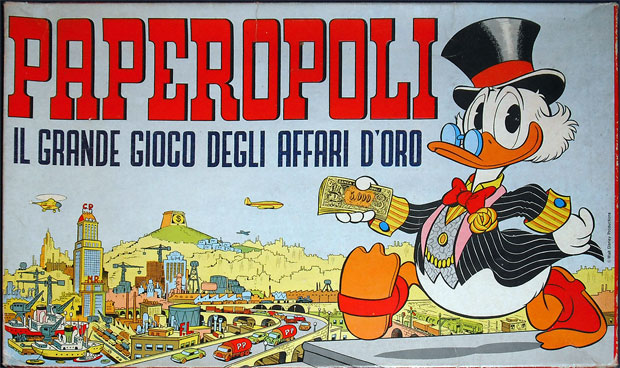
The 1974-75 release of Paperopoli Il Gran Gioco Degli Affari D’oro was a high-water mark for the Italians. Paperopoli was the Italian name for Duckberg. The subtitle translated to the Great Game of Business Gold. This game was ambitious in scope and execution. The game was designed for a maximum number of 6 players. A quick look at the contents could identify the various items used in the playing of the game. There were six cone shaped markers identifying the players and six major commodities to collect. Assets were tracked on individual portfolios. Transactions were made with large sums of colored paper money.
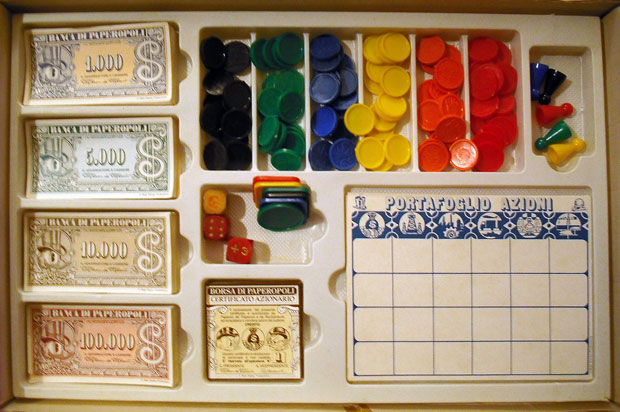
The game took its inspiration from Monopoly, with colored paper money involved and commodities that could be collected during the play. However the game had far more of a business spin to it.
Players started with a share of a particular business; Commerce, Industry (Manufacturing), Transportation, Credit, Oil or Construction. Stakes in each business were denoted by colored chips or tokens with impressions of the business logos on them. Players would then take turns going around the board trying to make money by buying or selling stakes in their portfolio.
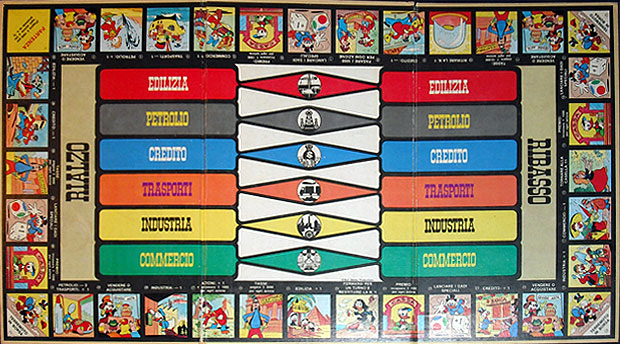
The board itself was based heavily on comic book canon. Just about all of the major players from the pages of Topolino were featured on the squares including Mickey Mouse, Donald Duck, Daisy Duck, Goofy, Gladstone Gander, Scrooge McDuck, Moby Duck, Jubal Frostfeathers Pomp, John Rockerduck, the Beagle Boys, Magica DeSpell and Madam Mim. The latter two spell casters were used to create “earthquakes” or violent changes in the market. After all, what could explain the sometimes turbulent "invisible hand of economics" if it wasn’t magic? Players made their way around the board, affecting the various businesses by landing on squares and collecting commodities or by adjusting the stock market wheel, which was denoted on a separate board. Players gained or lost money depending on what they were invested in. Players in the lead got to hold onto Scrooge’s Number One coin to denote their business superiority.
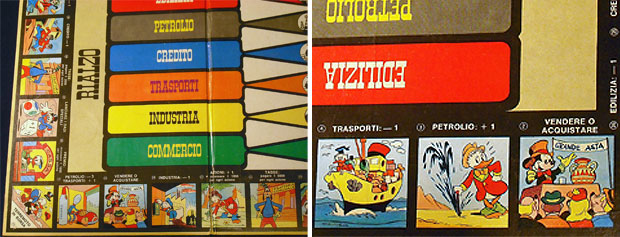
Just because a player started in a particular industry it did not mean they were locked into it. Players could diversify their portfolio and try to cover the markets they felt held the most potential. The entire mechanic was brilliant for teaching players about the ins and outs of business culture and the stock market. As far as I know this play mechanic had not been repeated in any board game.
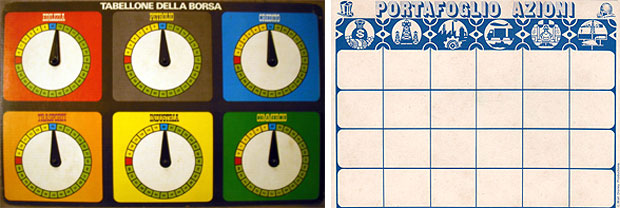
The game was very cleverly put together and layered in tremendous detail. The bright illustration on the cover gave a clear shot of the city and highlighted all of the various industries in Duckberg, making sure to include buildings and commerce owned and operated by the major players in Duckberg.
Each of the items included in the game carried over the same themes and attention to detail. The stock certificates for example reinforced the graphics imprinted on the colored plastic chips. They looked like tiny shares underwritten by both Scrooge and Rockerduck and could be set onto each player's portfolio.
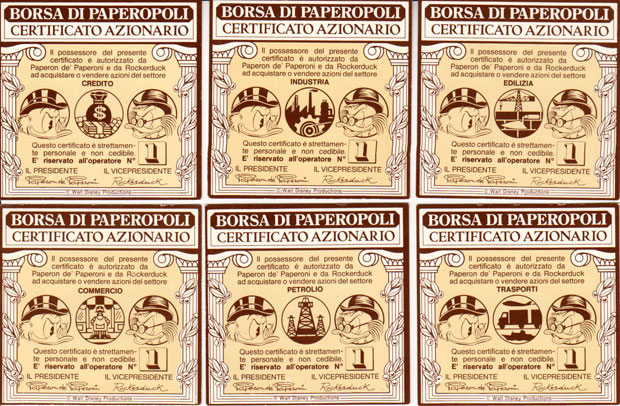
The baknotes were pure works of art. The currency of Paperopoli was signed by the Bank Governor and Cashier Zio Paperone, the Italian name for Uncle Scrooge. These bills were far more impressive than the currency used in Monopoly. The denominations were also much larger in Paperopoli than in Monopoly. The smallest bill in Monopoly was $1 while the largest was $500 The smallest denomination in Paperopoli was $1000 with the largest being $100,000.
The denominations in Paperopoli had to be large given the shares of industries that could be purchased. The stock market in Paperopoli could cause shares to jump exponentially up or down in price meaning that fortunes could be made or destroyed rather quickly. Additionally the bank notes had to be in high denominations because the goal of the game was to be the first to reach $1 Million or be the last player not to go bankrupt.
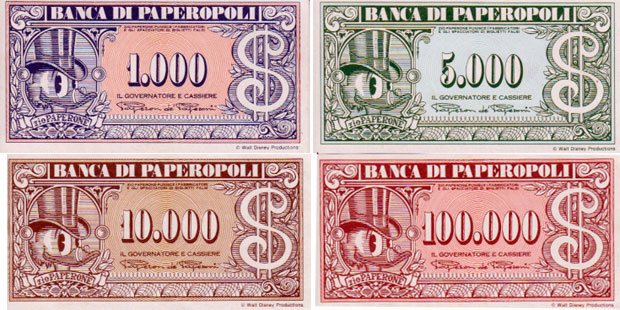
The design, concept and execution of Paperopoli were nothing short of genius. The game demonstrated the type of innovation that Disney was capable of when they put their best foot forward. The thing that helped elevate this game to greatness was more than the tremendous amount of work that went into it but instead the exclusivity of the title. Paperopoli was only available for order from the pages of Topolino magazine.
Italian fans that admired and appreciated the Disney universe could get a fantastic game that could never be found in any toy, hobby or department store.
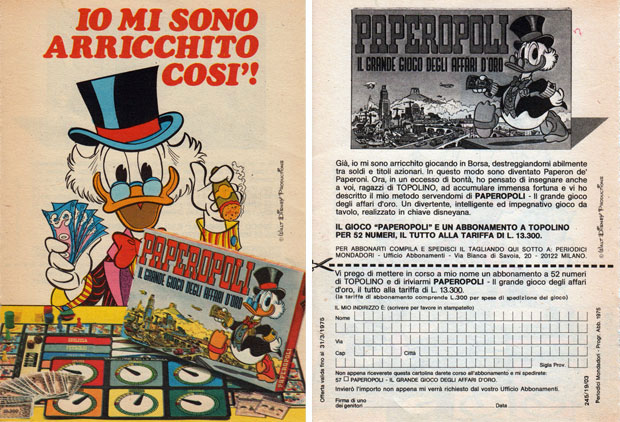
These types of promotional items were not uncommon in the pages of Topolino, just like the gadgets, figures or toys available to subscribers. Publishers rewarded fans of Disney with unique collectables designed for the whole family. There was nothing similarly available to Disney fans in the USA by comparison. This did not mean that Disney in the USA was not trying. The fledgling D23 the Official Fan Club for Disney enthusiasts was launched to try and reach out to the generations of fans and find out what their interests were. Subscribers would receive a poster or pin unavailable in any store. There was still a long way to go before fans in the USA had the same choices as those in Italy. In the past few years the publishers of Topolino had been helping the US Disney offices reach more fans than ever before. How they did it will be explored in the next blog.
As always if you would like to sponsor me please visit my Patreon page and consider donating each month, even as little as $1 would help make better blogs and even podcasts!
No comments:
Post a Comment